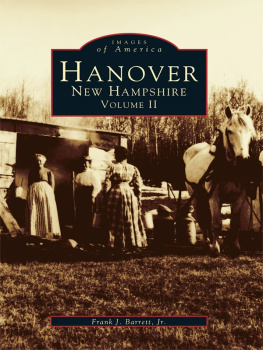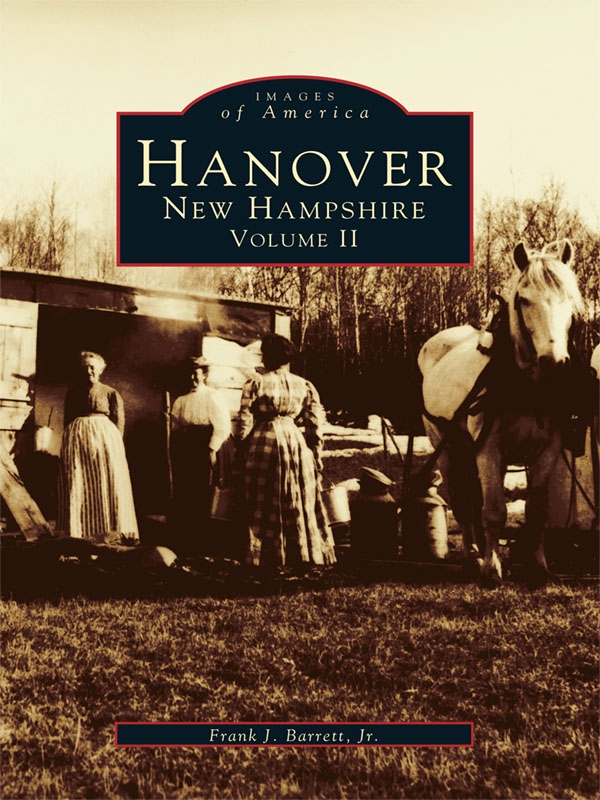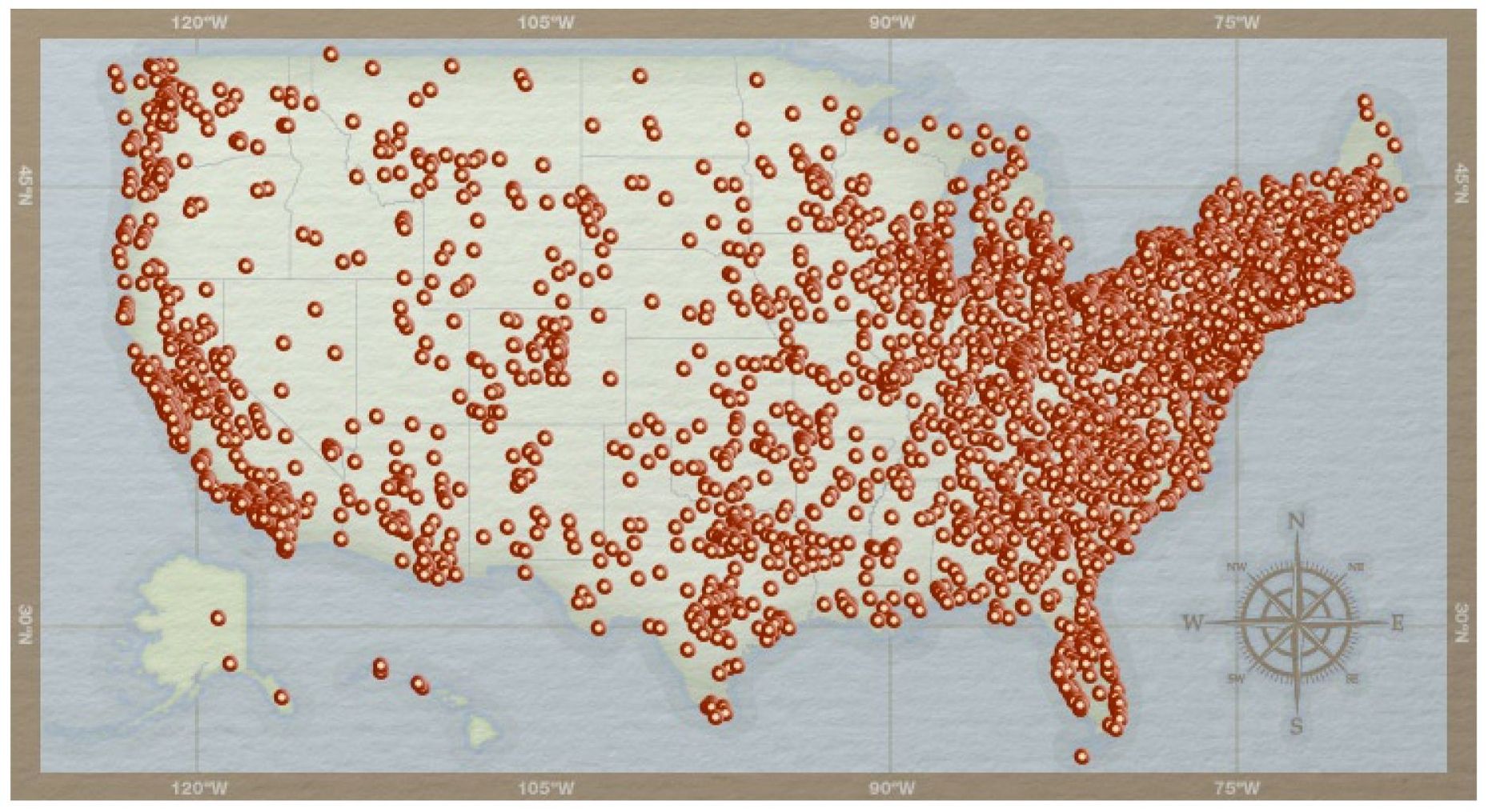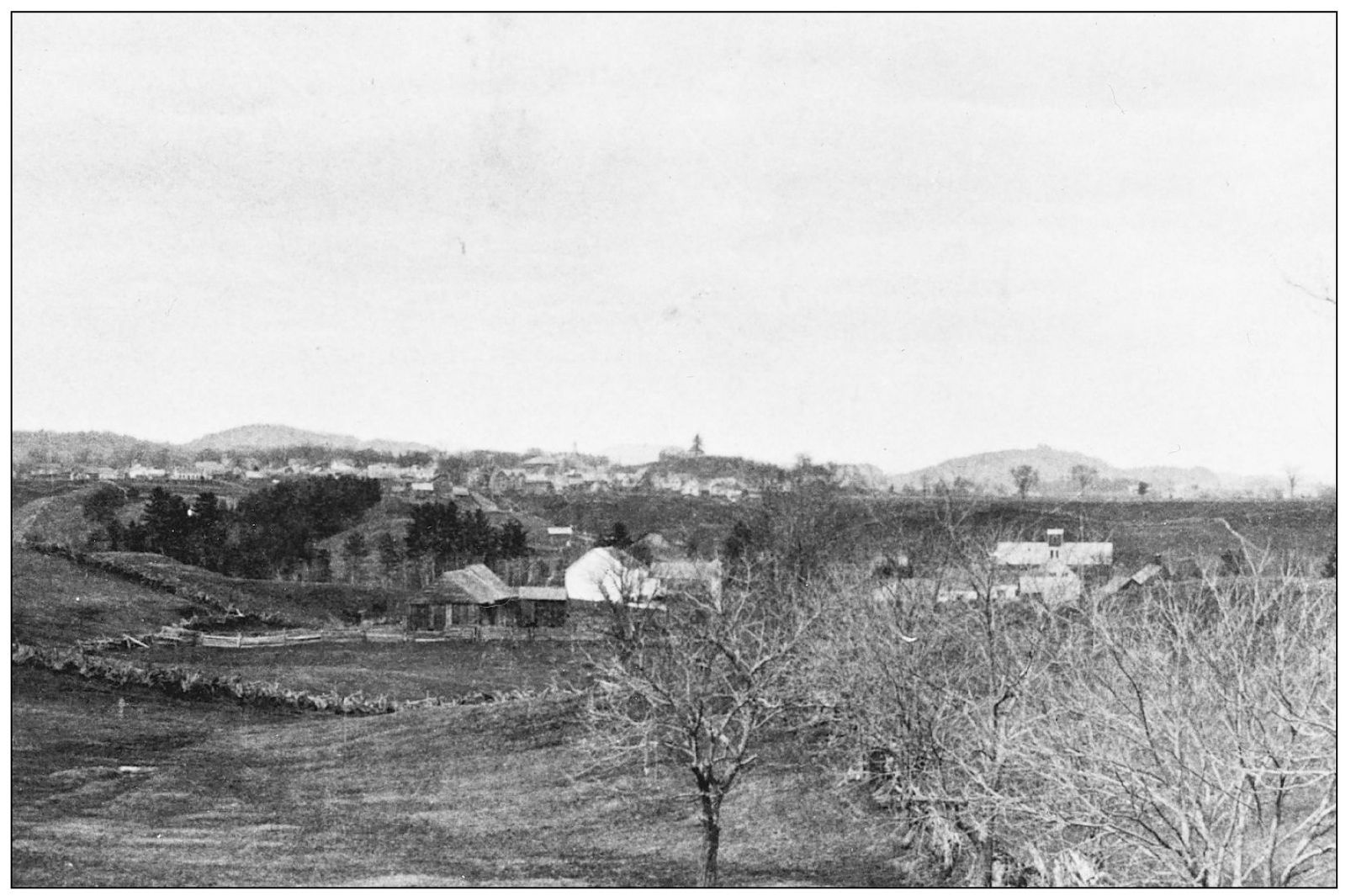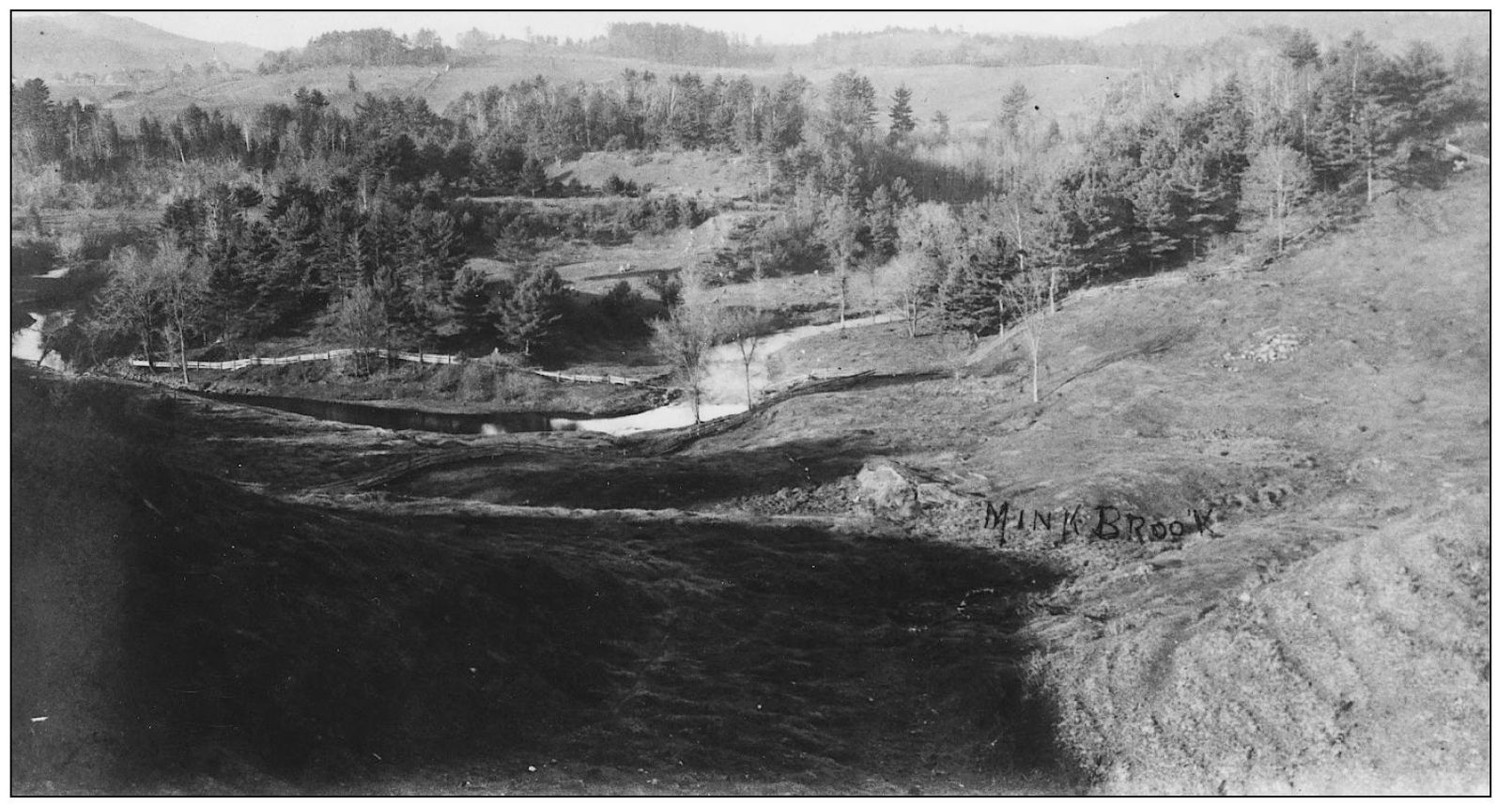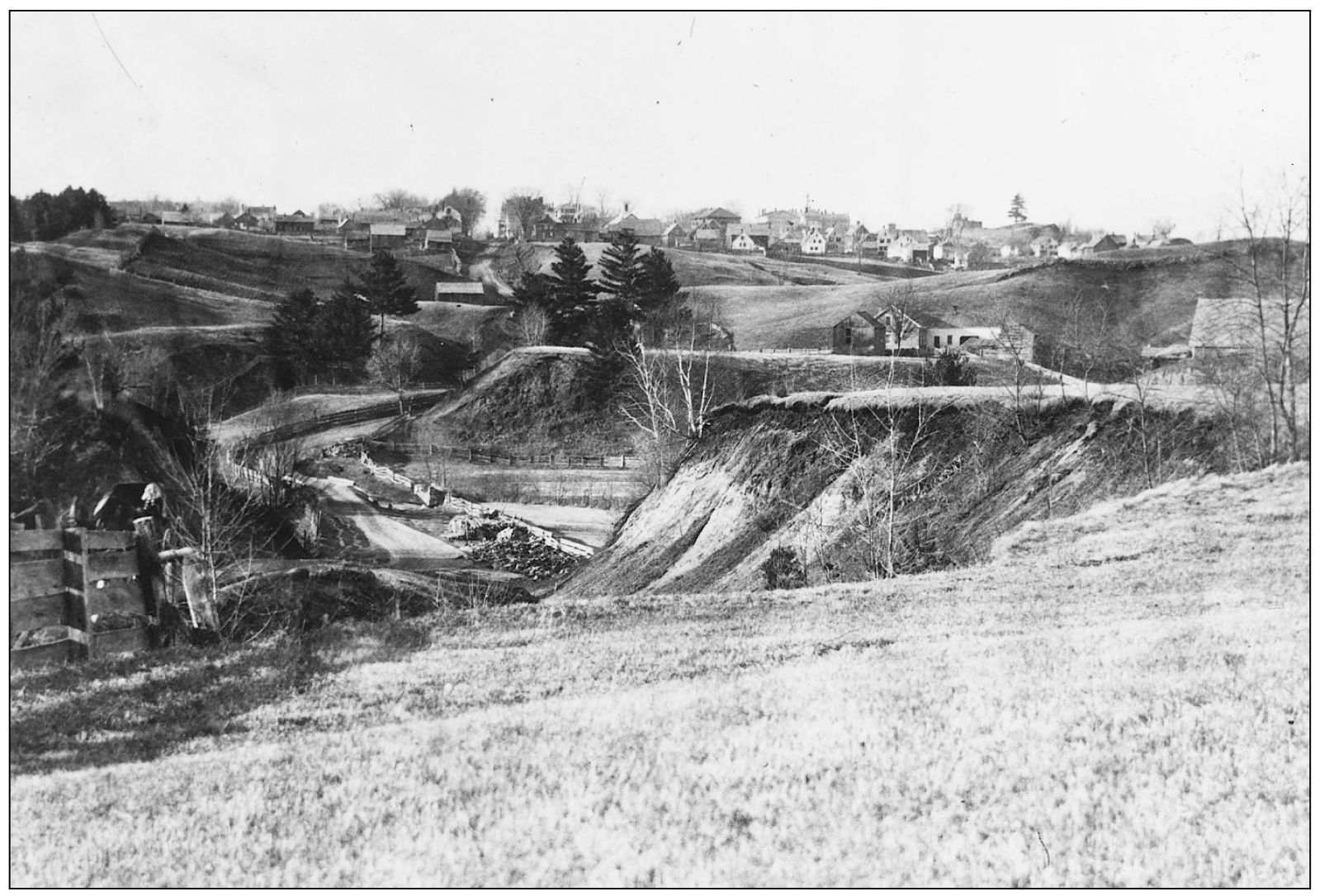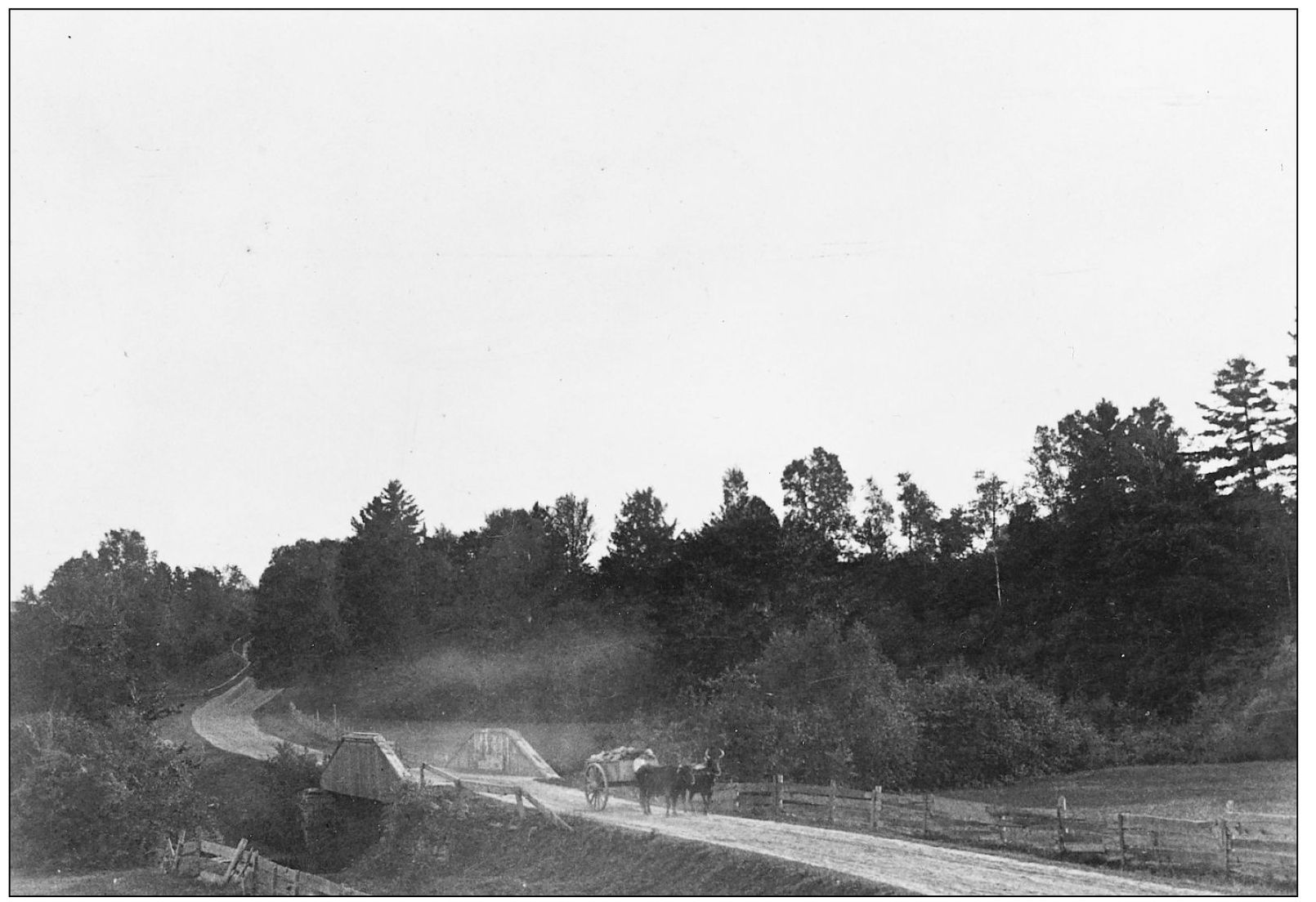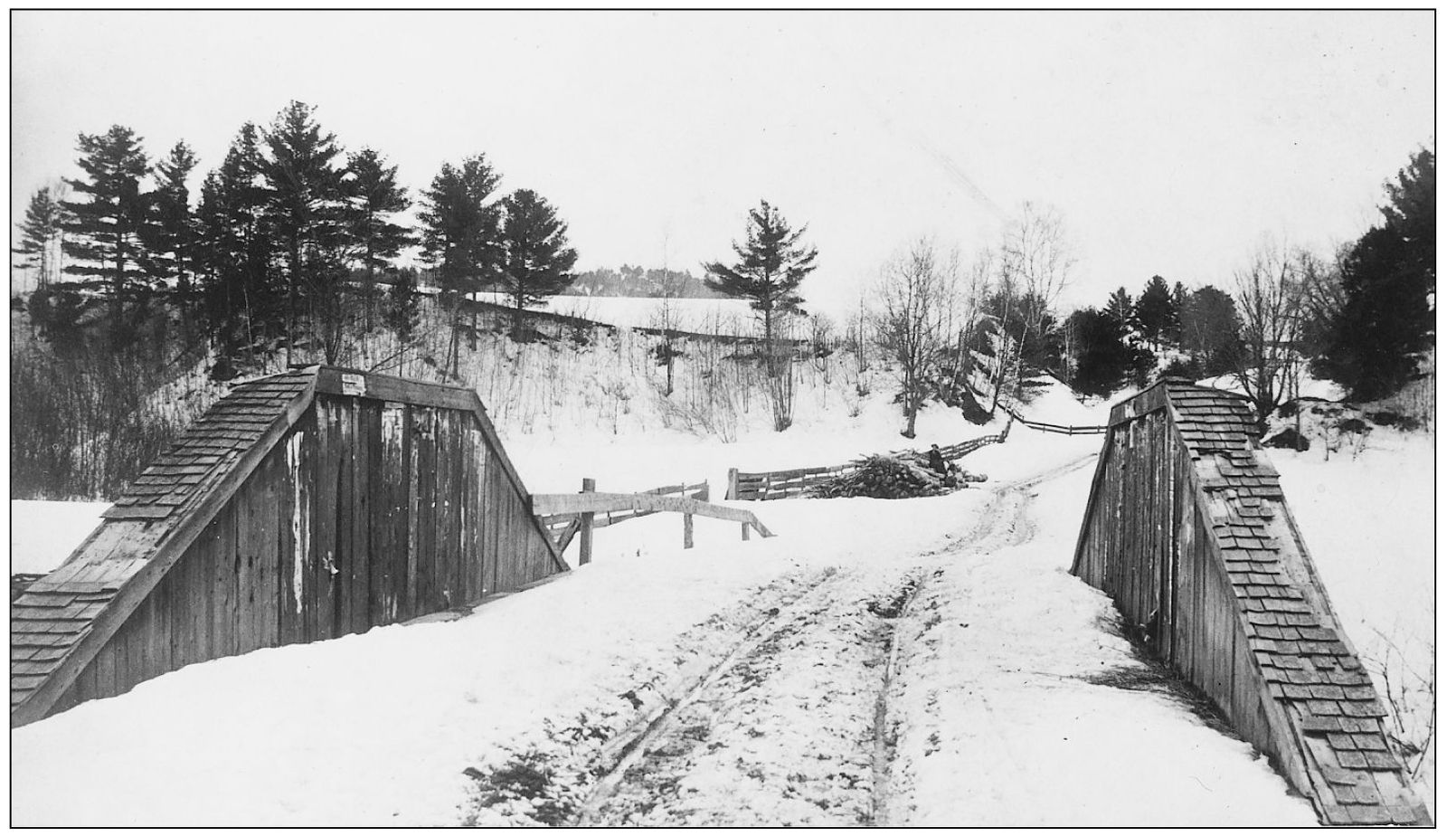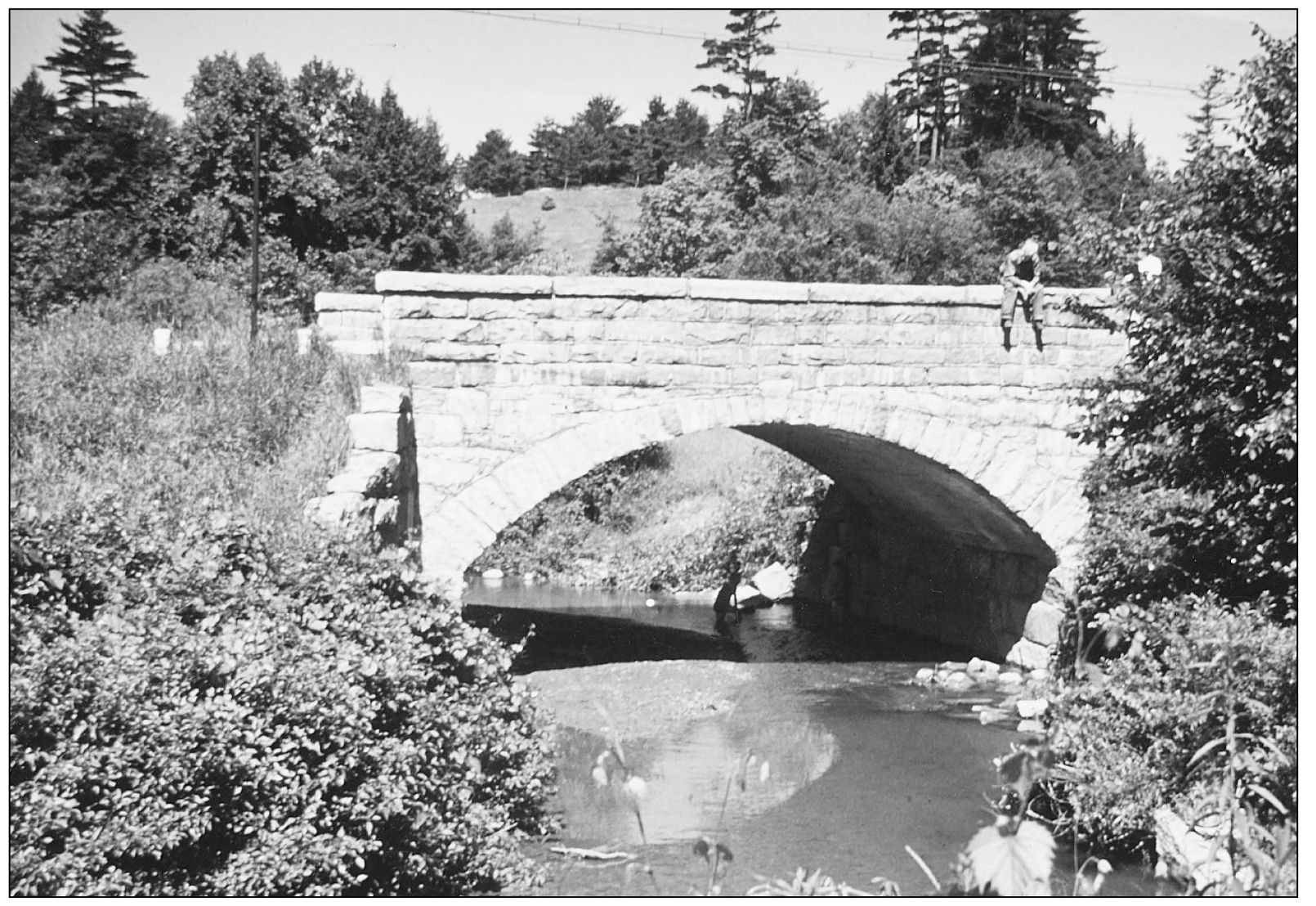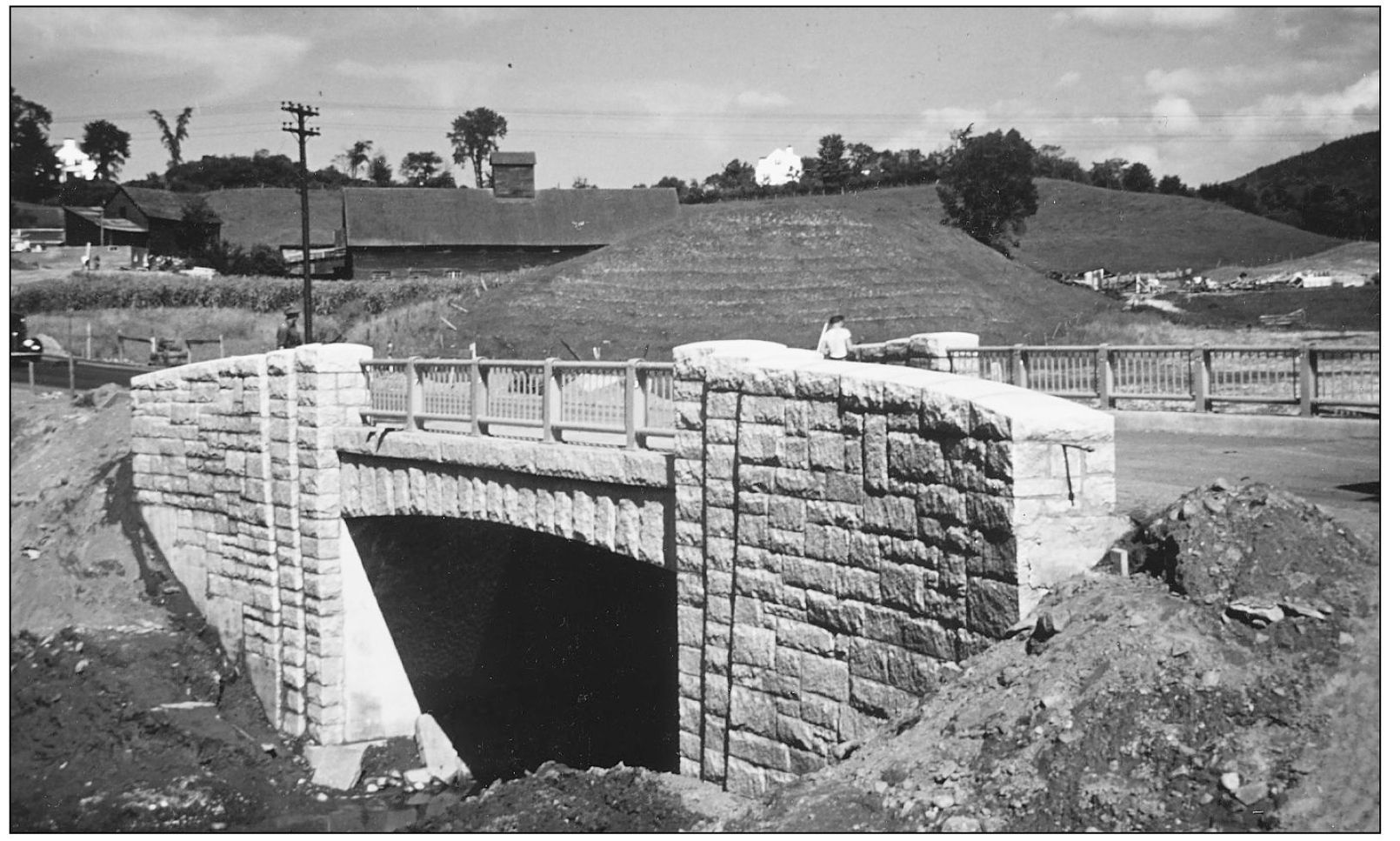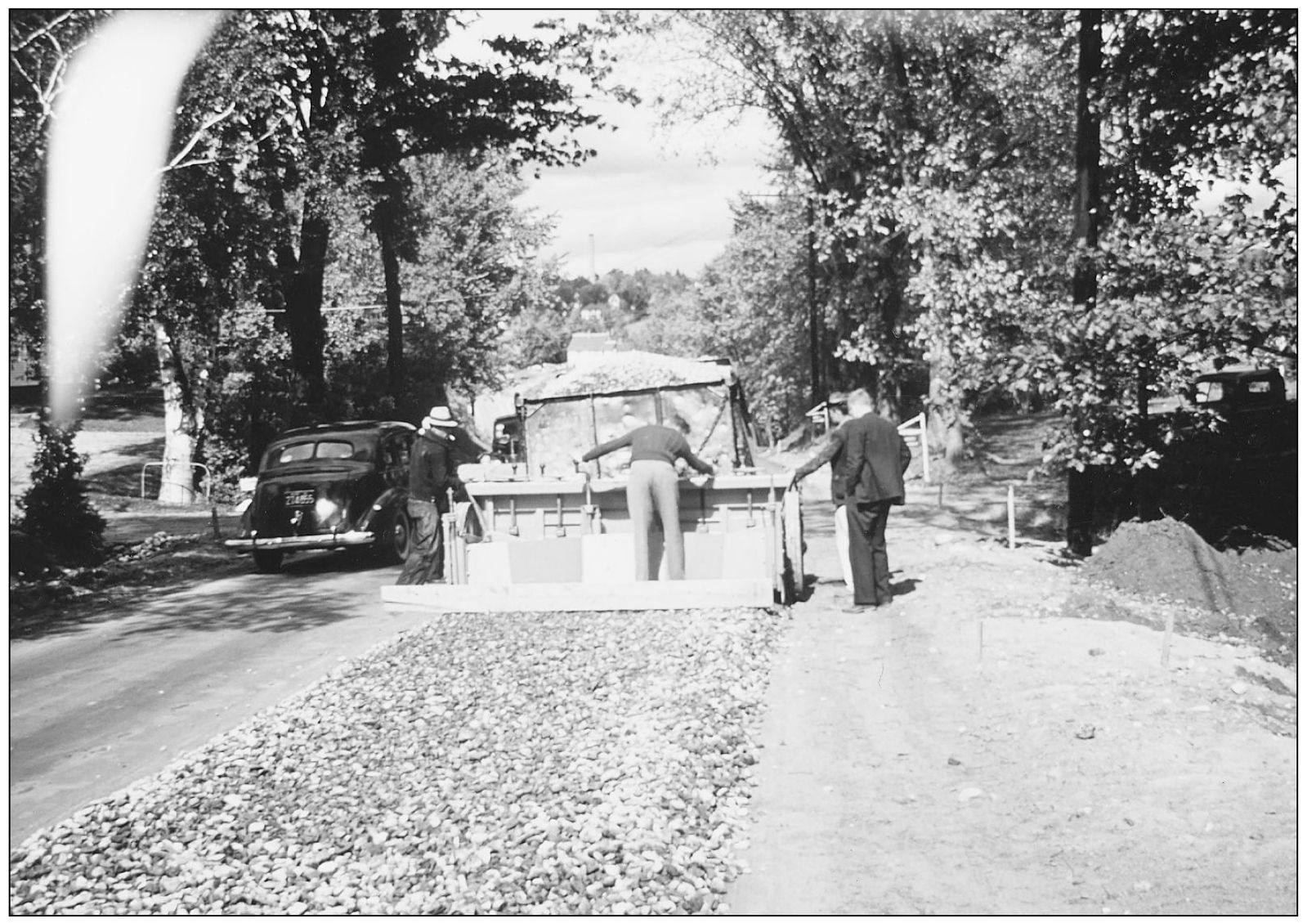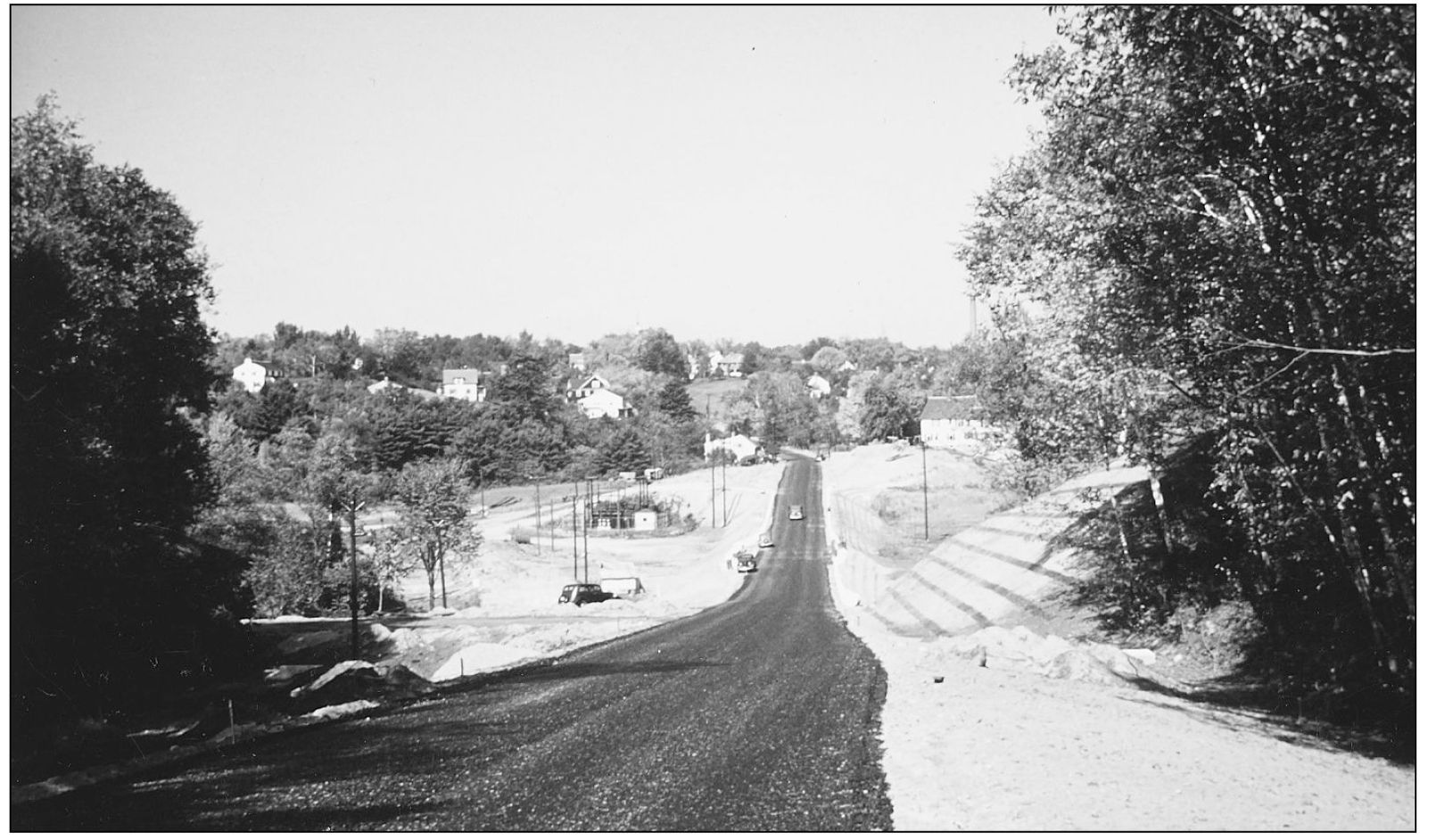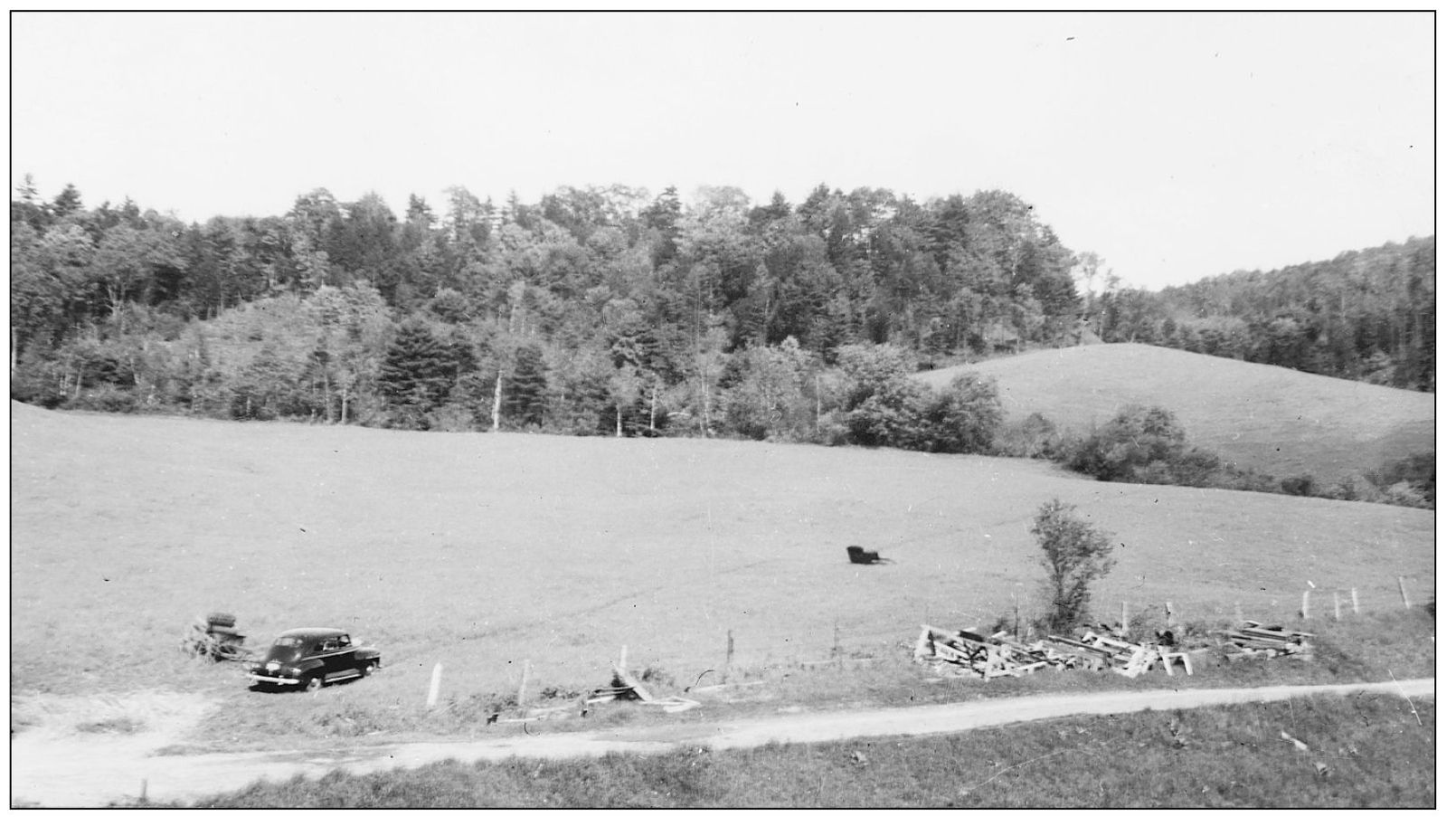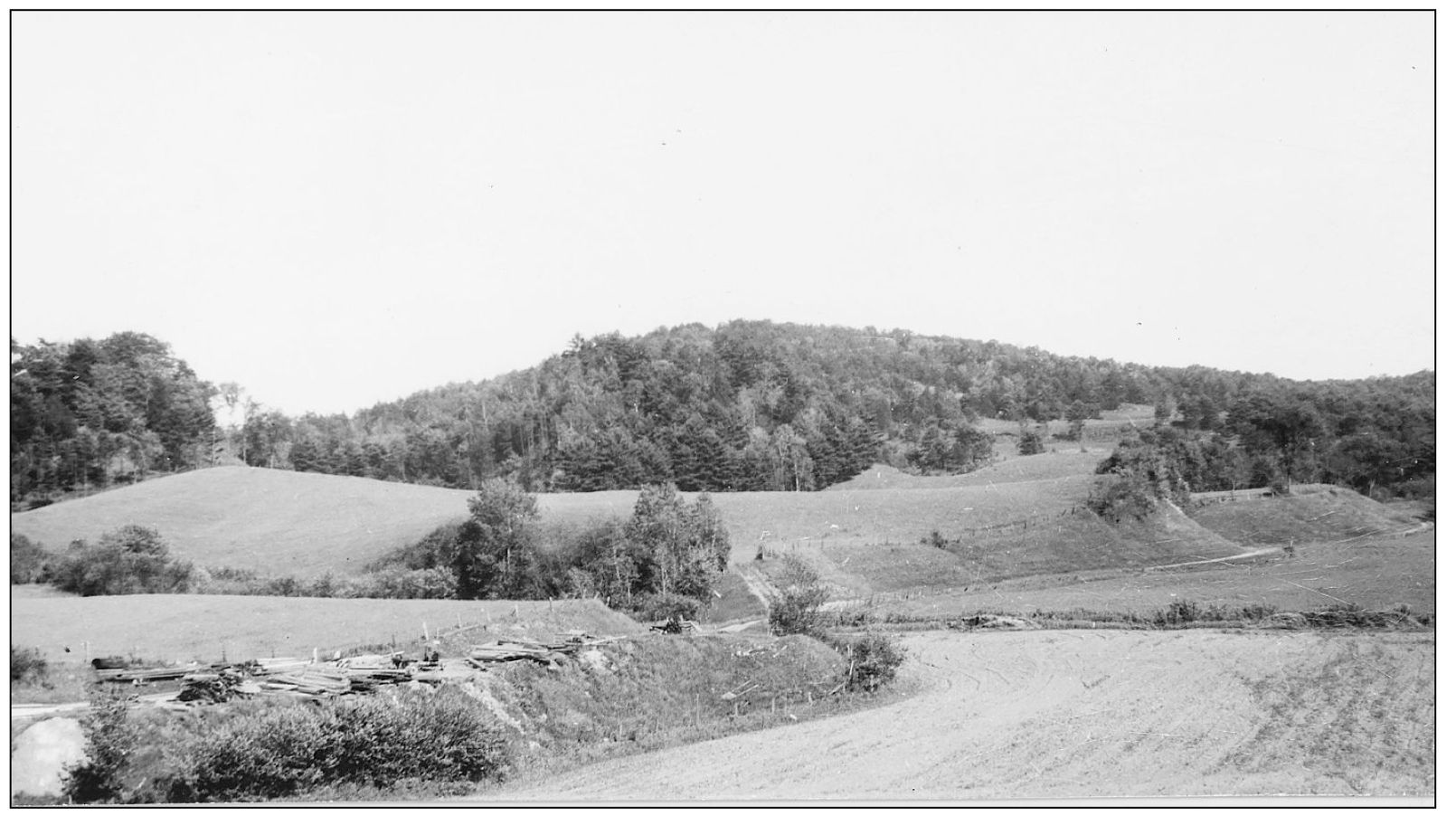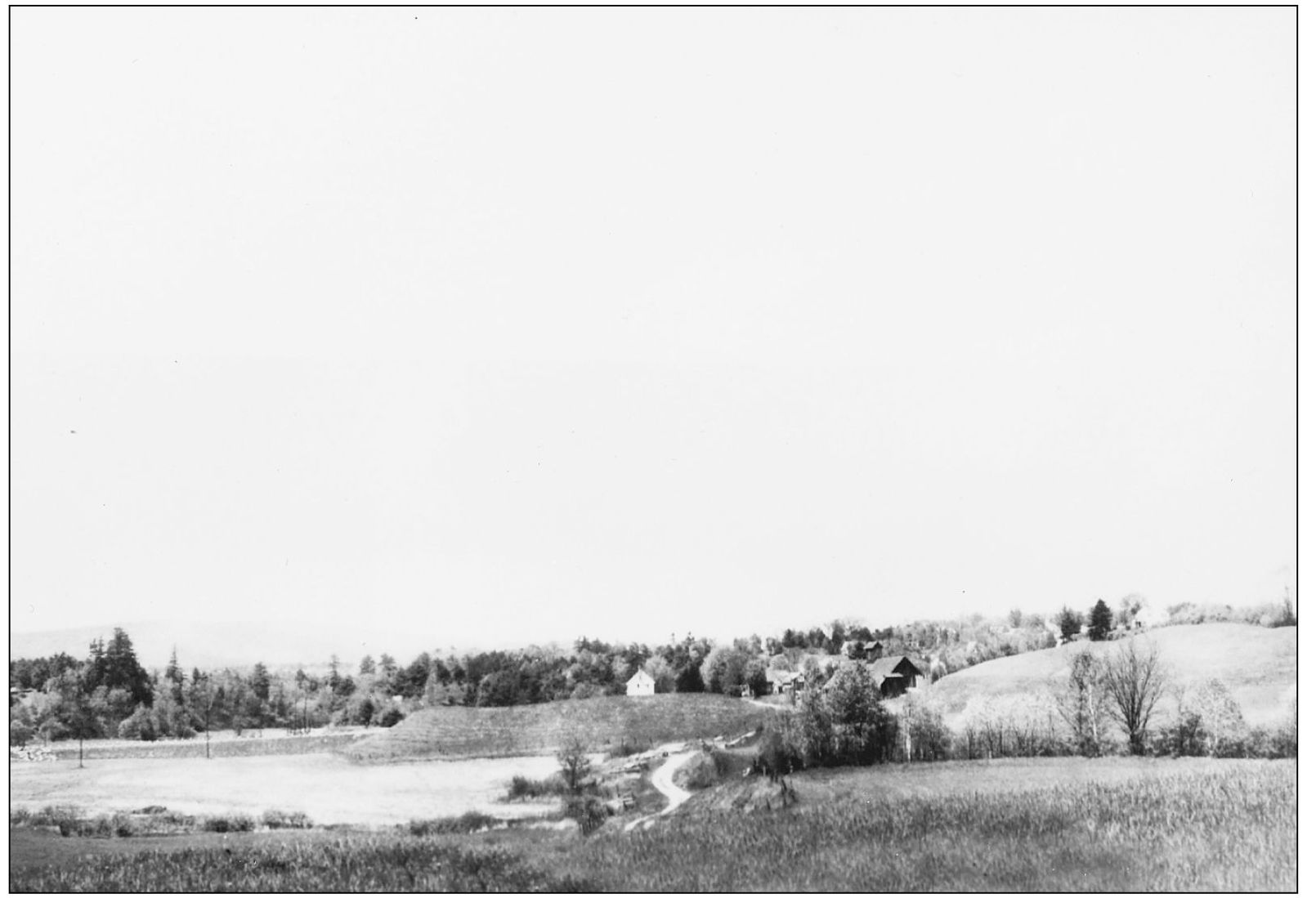One
Heading Out into the Country
The village of Hanover is seen in the distance of this early photograph taken in 1871 looking north from the West Lebanon Road. Note the primitive stump fence along the road, remaining from colonial times when the land was first cleared. In the mid-ground are Monroe Pikes 90-acre farm, and Joseph Tildens 117-acre spread. Today this is the Wyeth Road/Dunster Drive neighborhood. In the far right can be seen the large barn of the Benton farm situated adjacent to Mink Brook.
This is a later nineteenth-century view of Mink Brook looking from Pleasant Street. To the left is now located the Pine Knoll Cemetery; and just beyond the bluff to the right is the present Hanover Waste Water Treatment Plant. Since 1950, and the completion of Wilder Dam on the Connecticut River, all of the meadows on both sides of the brook have been flooded and are now under water.
Looking north in 1868 from the present-day Mourlyn Road area, this view shows West Lebanon Road winding its way across the meadows along Mink Brook. To the left is the Charles Benton farmthe brick farmhouse is still standing today at 104 South Main Street. In the distance is the village and Dartmouth College.
This is a view taken in the early fall of 1888 looking south along the West Lebanon Road. In the foreground are the fields of Charles Bentons farm and the wooden bridge across Mink Brook. The present-day Pine Knoll Cemetery occupies the right-hand bluff; and the Mourlyn Road neighborhood is to the left.
A close-up view of the Mink Brook bridge on the West Lebanon Road in the 1880s shows the wood siding and shingles, which were intended to protect the heavy timber-framed queen post truss bridge structuretypical of the era preceding structural steel and the advent of the automobile age.
During the summer of 1914, a new stone bridge was constructed across Mink Brook on the West Lebanon Road (see page 40, Volume 1 of this series). However, a mere 26 years later, it was again replacedthis time when the highway was relocated. This view looking west was taken just prior to the bridges demolition in 1940.
The new Mink Brook bridge appears here just after completion in 1940. With a new bridge and a relocated road, the stream location was also altered and straightened out. In the distance is the Benton farm, by then owned by the Charles Stone family.
In this photograph, showing modern road building in 1940 just prior to World War II, crushed stone is being spread on the rebuilt West Lebanon Road opposite the entrance to the Wyeth Road neighborhood to the left. Once the stone had been laid down, a thick layer of tar was then applied.
The new West Lebanon Road appears here in 1940. To the left can be seen the old road, and in the distance is downtown Hanover. Compare this view with the earlier photograph on page 10, taken in 1868 from almost the same location.
The Charles Stone farm in 1948 is seen here just prior to the large four-story barn being taken down. Charles Benton originally constructed the four-story, 135-by-45-foot barn in 1852. The white farmhouse had been moved in 1940, when the West Lebanon Road was relocated, and it is still standing at 104 South Main Street.
The Mitchell Lane neighborhood now occupies these fields shown in this 1948 view taken looking east from beside the Stone farm barn. The old sleigh was left from the auction of all the farm equipment when the property was sold that year for development.
This is another view taken from the same location looking up the Mink Brook Valley. Brook Road now runs through the meadows in the foreground. At one time under the Benton familys ownership, this farm had 324 contiguous acres, 175 of which were in Hanover; and they grazed more then 225 head of Merino sheep.
Looking west in 1948 from the bluff of present-day 10 Brook Road, this view shows the Stone farm buildings in the distance. To the left are the meadows along Mink Brook and the West Lebanon Road cutting across them.

